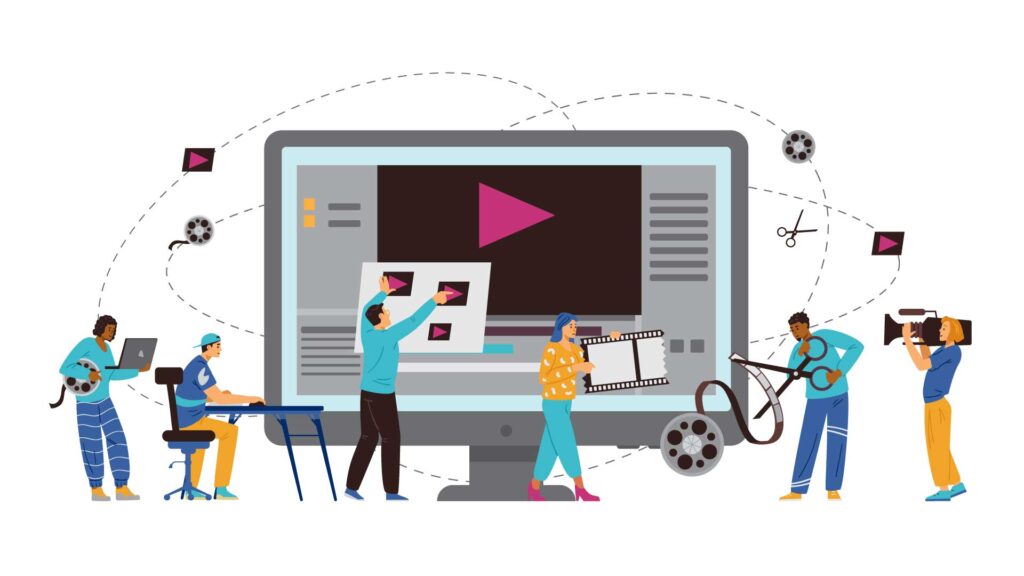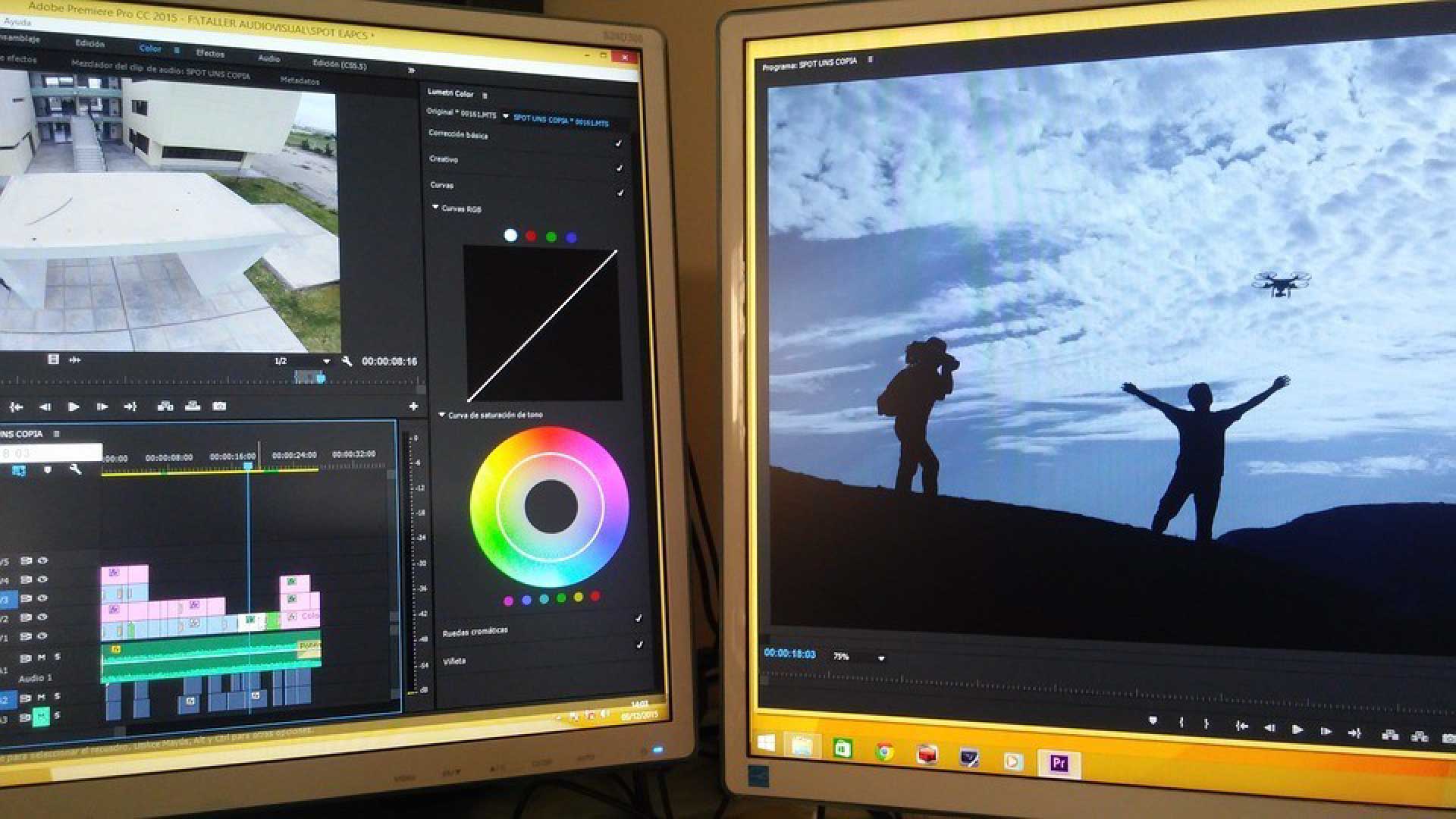
How to Become a Motion Graphics Designer
Becoming a motion graphics designer is a rewarding career path in the video production industry. Motion graphics designers create visual content that enhances multimedia projects, including films, advertisements, and digital media. Today we’re going to review what it takes to become a graphics designer, covering educational pathways, essential skills, portfolio building, gaining experience, and job search strategies. By understanding the steps involved, you can embark on a successful career in motion graphic design.
What is Motion Graphics Design?
Motion graphics design involves creating visual elements for video content. This includes motion graphics, animations, and visual effects that enhance storytelling and engagement in multimedia projects. Unlike static graphic design, video graphic design incorporates motion and timing to create dynamic visual experiences. These designers work in various industries, including film, television, advertising, and digital media, to produce compelling visual narratives.
Educational Pathways
Formal Education
Pursuing a bachelor’s degree in graphic design, fine arts, or visual communications provides a strong foundation for a career in video graphic design. Courses in animation, digital media, and interactive design are particularly relevant. Formal education offers benefits such as structured learning, access to advanced tools and software, and networking opportunities through internships and industry connections.
Alternative Education
Certificate programs and bootcamps offer specialized training in a shorter timeframe. These programs focus on practical skills and software proficiency, providing hands-on experience. Online courses and self-taught methods offer flexibility and affordability. Platforms like Coursera, Skillshare, and YouTube provide valuable tutorials and projects for aspiring video graphics designers.
Essential Skills and Software
Technical Skills
- Adobe Creative Suite: Mastery of Adobe Photoshop for image editing, Illustrator for vector graphics, and After Effects for motion graphics and animations is essential.
- 3D Software: Proficiency in 3D design software such as Cinema 4D and Blender is crucial for creating complex animations and visual effects.
- Coding: Understanding basic coding in HTML, CSS, and JavaScript can enhance interactive design capabilities.
Soft Skills
- Creativity and Artistic Vision: Fundamental for generating innovative design concepts and solutions.
- Communication: Strong communication skills facilitate collaboration with clients and team members, ensuring that project goals are clearly understood and met.
- Time Management: Effective time management and problem-solving abilities ensure projects are completed efficiently and to high standards.
Building a Strong Portfolio
A well-curated portfolio showcases your best work and demonstrates your range of skills and creativity. Include a variety of projects such as motion graphics, animations, and visual effects. Highlight your process by including sketches, mock-ups, and final products. Use platforms like Behance, Adobe Portfolio, and personal websites to display your portfolio. A professional portfolio is crucial for landing jobs and clients in the video graphics design industry.
Gaining Experience
Internships
Applying for internships at design firms, advertising agencies, and media companies provides hands-on experience and industry connections. Internships offer practical learning opportunities, allowing you to work on real projects under the guidance of experienced professionals.
Freelancing and Volunteer Work
Starting as a freelancer helps you gain practical experience and build a client base. Volunteering for non-profits and community projects adds to your portfolio and demonstrates your commitment to the field. Freelancing also offers flexibility and exposure to a diverse range of projects.
Networking
Building professional relationships is essential in the creative industry. Attend industry events, join professional organizations, and engage in online design communities to connect with other designers, potential clients, and mentors. Networking can lead to job opportunities and collaborations that enhance your career.
Keeping Up with Industry Trends
Staying current with design trends and technology is essential for motion graphics designers. Follow design blogs, participate in online tutorials, and attend workshops to continue learning. Engaging with the design community provides inspiration and feedback on your work. Subscribing to industry publications and joining forums can help you stay updated on the latest tools and techniques in graphic design.
Job Search Strategies
Applying for Jobs
Tailor your resume and cover letter to highlight relevant skills and experience. Prepare a strong portfolio to showcase your work during interviews. Research potential employers and understand their projects and style to better align your application with their needs.
Freelance vs. In-House
Freelance work offers flexibility and the opportunity to work on diverse projects, while full-time positions provide stability and benefits. Freelancing allows you to set your schedule and choose projects that interest you, but it requires self-discipline and strong business skills. Full-time positions offer a steady income and opportunities for growth within a company. Choose the path that aligns with your career goals and lifestyle preferences.
FAQs
What qualifications do you need to be a motion graphics designer?
A bachelor’s degree in graphic design, media production or a related field is common, but a strong portfolio and relevant skills can also qualify you. Formal education provides a comprehensive foundation, but self-taught designers can also succeed with the right skills and experience.
How long does it take to become a motion graphics designer?
It typically takes 3-4 years to complete a degree program. Alternative education paths, such as bootcamps and online courses, can vary in length depending on the intensity of the courses. Gaining experience through internships, freelancing, and volunteer work also contributes to your development as a designer.
What software do video graphics designers use?
Essential software includes Adobe Photoshop, Illustrator, After Effects, and 3D design tools like Cinema 4D and Blender. Proficiency in these tools is crucial for creating high-quality video graphics.
Can you become a motion graphics designer or animator without a degree?
Yes, through online courses, bootcamps, and building a strong portfolio, you can enter the field without a formal degree. Practical experience, a solid portfolio, and networking can help you succeed as a self-taught designer. However, many of the design principles are the foundation of degree programs and can speed the learning process.
Is Video Graphic Design in Your Future?
Becoming a video graphics designer involves a combination of education, skill development, and practical experience. Whether through formal education or alternative pathways, building a strong portfolio and gaining industry experience are crucial steps.
Continuous learning and networking are essential for staying current in this dynamic field. By following these steps, you can pursue a rewarding career in motion graphics design, creating engaging and impactful visual content for various multimedia projects. Embrace the journey of learning how to make video graphics and continually refine your craft to stay ahead in the ever-evolving design industry.
Cynthia Kay founded Cynthia Kay and Company media production 35 years ago. The company produces communications for organizations from Fortune Global 100 to small businesses. A graduate of Michigan State University, Kay holds a master’s in communications from Western Michigan University.
She is the Past Board Chair of the Small Business Association of Michigan (SBAM) and the National Small Business Association (NSBA). Cynthia has been honored with many awards including numerous Tellys and Woman Owned Small Business Supplier of the Year from Siemens in 2018. She has been named One of West Michigan’s 50 Most Influential Women 5 times. She is also the recipient of over 30 broadcast awards from UPI, AP and other news organizations.



